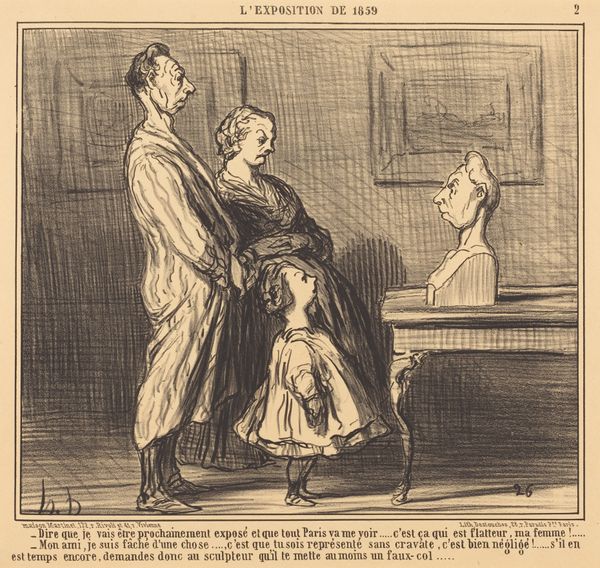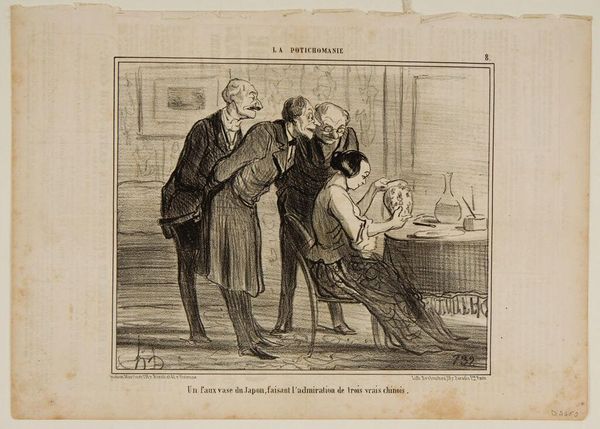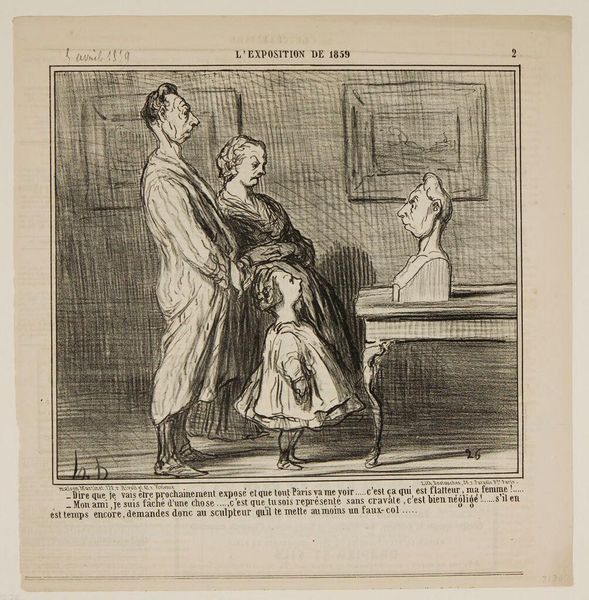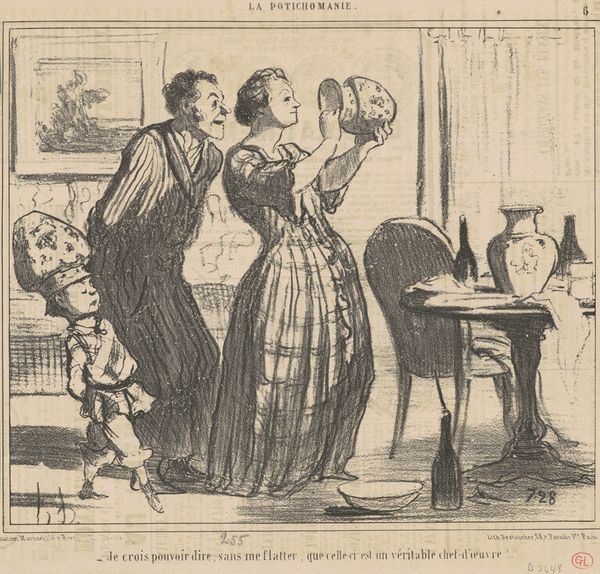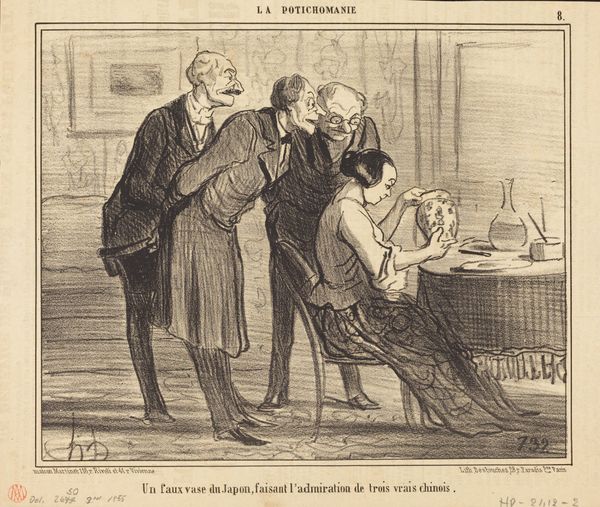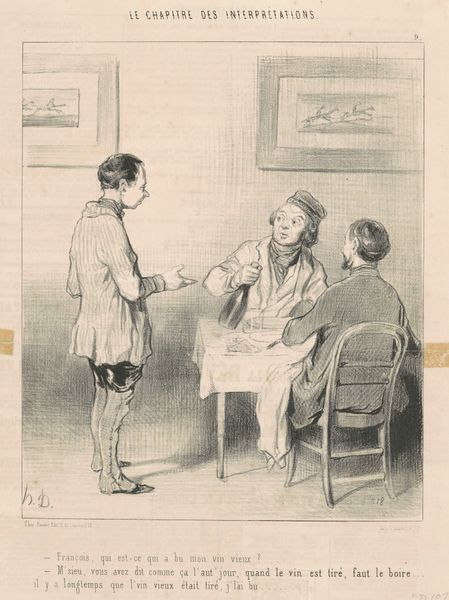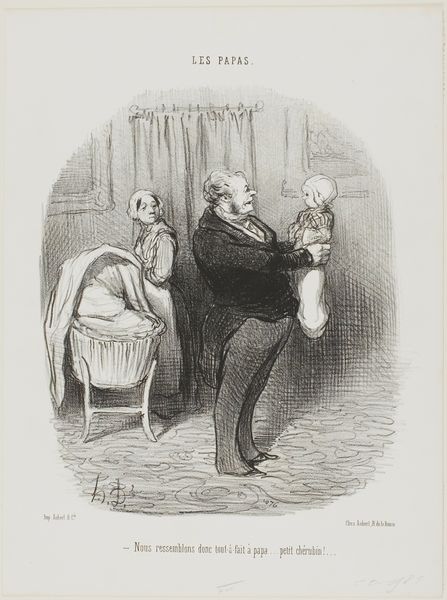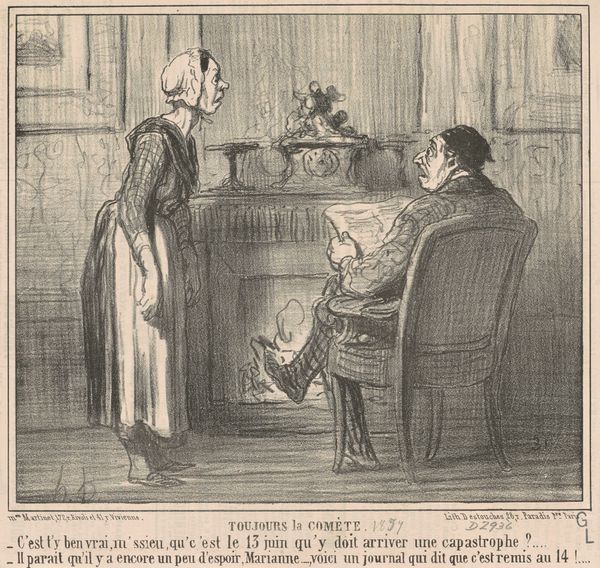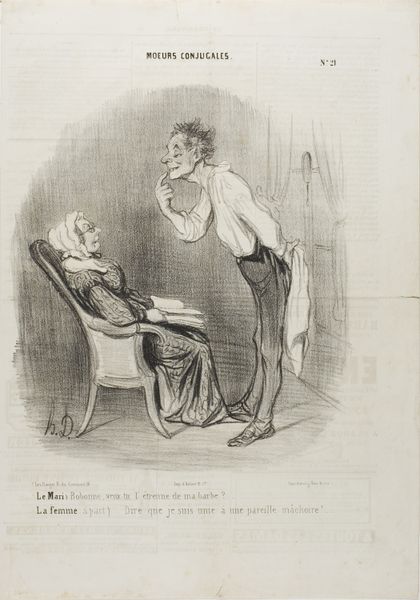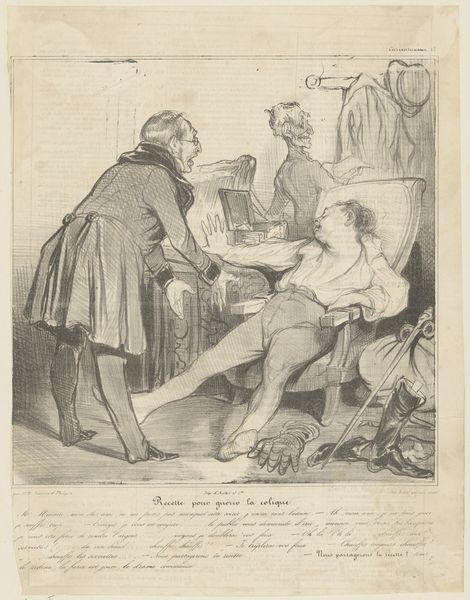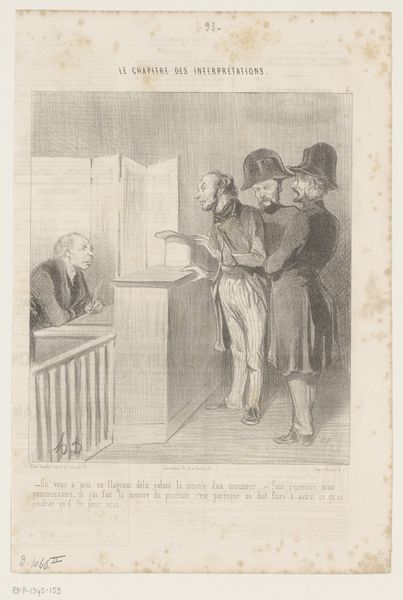
lithograph, print
#
portrait
#
lithograph
# print
#
caricature
#
figuration
#
romanticism
#
line
#
genre-painting
#
realism
Copyright: National Gallery of Art: CC0 1.0
Curator: Looking at this print, "Adélaïde... ma bonne... fais donc...", made around the 19th century by Honoré Daumier, what's your first reaction? Editor: Chaotic. Utterly chaotic. The frenetic lines and exaggerated expressions convey pure domestic pandemonium. It feels like the artist captured a moment of sheer parental exhaustion. Curator: It’s a lithograph, so the process is one of drawing on stone, building up greasy marks to attract the ink. What do you make of his choices of materials and methods? Editor: The lithographic crayon grants Daumier freedom in his lines, perfect for capturing movement and fleeting expressions. See how he uses hatching to define volume? And that exaggerated physiognomy serves a satirical intent. Curator: Precisely! Daumier worked for "Le Charivari," a satirical magazine. This print likely critiques bourgeois domesticity, focusing on the mother, Adelaide, engrossed in "potichomanie"—decorating glass—while her husband struggles with their screaming child. This relates to labor divisions, consumerism, and class anxieties during industrialization. Editor: Fascinating how "potichomanie," a trivial, domestic craft, becomes symbolic of the wife's indifference to the “labor” of childcare. Look at the details of Adelaide’s meticulous decoration versus the frantic lines illustrating the husband's desperate state. It underscores the contrast between meticulous craftsmanship and raw, unfiltered emotion. Curator: Yes, it seems he criticizes the misplaced priorities and alienation produced by the rising bourgeoisie—the separation between work and home and a devaluing of physical labor, too, right? Daumier used his art as a form of social commentary, reaching a wide audience through the press. Editor: I appreciate how Daumier uses realism to depict a scene that verges on the absurd. The composition is so dynamic, pulling you into the chaos, yet structured enough to deliver the critique. The figures create strong diagonals, energized by contrasting dark and light patterns. Curator: Considering all we've observed, this image shows Daumier skillfully used the medium of lithography to offer social commentary through caricature, laying bare anxieties around gender roles, class, and consumer culture in 19th-century France. Editor: It seems Daumier wasn't just a skilled draftsman. He captured and conveyed human experience and exposed deeper cultural meanings behind this supposedly mundane domestic tableau.
Comments
No comments
Be the first to comment and join the conversation on the ultimate creative platform.
